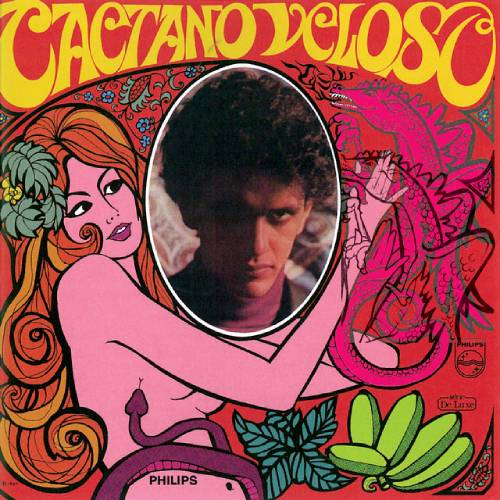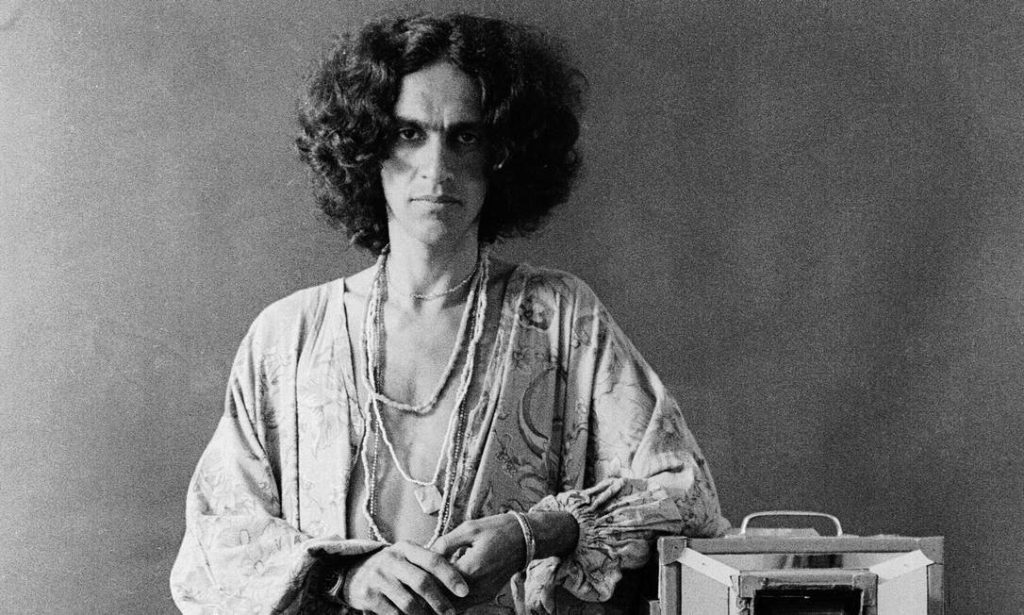
Caetano Veloso, an emblematic figure of Brazilian music, embodies the essence of Tropicália, an avant-garde cultural movement, with brilliance. His name, a symbol of poetry and resistance, immediately evokes an unmatched musical richness and steadfast political commitment. Let's explore the fascinating journey of this extraordinary artist together.
Born in 1942 in Santo Amaro, Brazil, Caetano Emanuel Viana Telles Veloso was cradled from an early age by the rhythms and melodies of his country. The choice of his name, inspired by a family friend, already predestined young Caetano to a life marked by art and creativity.

In the heart of the 60s, Veloso became a central figure of Tropicália, a revolutionary movement that blends diverse musical influences, from psychedelic rock to traditional Brazilian rhythms and bossa nova. Caetano Veloso, with songs like “Alegria, Alegria,” embodies this desire to break conventions and defy the censorship imposed by the military dictatorship at the time.
Veloso's voice, filled with emotion and protest, led to his forced exile to England in the early 70s. This period of isolation, far from breaking his spirit, enriched his music with international influences and reinforced his desire for freedom and justice. Upon his return to Brazil, he continued to engage through his songs and actions for democracy and human rights.
In art, it is necessary to get lost to find oneself.
Caetano Veloso
Always seeking renewal, Caetano Veloso has explored numerous musical genres over the decades, collaborating with renowned artists such as Gilberto Gil, Gal Costa, and Maria Bethânia. His ability to reinvent himself remains an inspiration for new generations of artists.
Among his most famous quotes, Veloso states: “In art, it is necessary to get lost to find oneself.” This phrase perfectly summarizes his artistic approach, always on the edge of experimentation and personal expression. An anecdote that illustrates his rebellious spirit: during a concert under the dictatorship, he painted the word “Anarchy” in English on his chest, openly defying the regime.
Caetano Veloso, with his unique voice and unwavering commitment, remains a key figure in world music. His trajectory illustrates the power of art as a vector of change and resilience. Veloso's legacy, rich in emotions and struggles, continues to inspire and resonate around the world.
The album : Caetano Veloso
In 1968, Caetano Veloso's self-titled album emerged as a revolutionary musical manifesto, forever marking the history of Brazilian music. With “Caetano Veloso” (also known as “Tropicália”), the artist laid the foundations of what would become an iconic cultural movement. This article delves into the behind-the-scenes creation of this album, exploring its recording sessions, critical reception, and surrounding anecdotes.
Recorded during a period of political turmoil in Brazil, the “Caetano Veloso” album stands out for its boldness and innovation. Veloso, along with collaborators such as Gilberto Gil and Gal Costa, blends various musical genres, from bossa nova to psychedelic rock, thus creating a unique sound. The recording sessions, described by Veloso as a “sound laboratory,” were imbued with an atmosphere of creative freedom, despite the context of political repression.
Upon its release, the album received mixed reactions from the general public, with some not appreciating the audacity of the sound experiments. However, specialized critics, quickly hailed “Caetano Veloso” as a major work. The critique called it a “visionary album” that “shakes the boundaries of Brazilian music.”
One of Veloso's most famous quotes, “The most important thing is to be ready at any moment to sacrifice what we are for what we could become,” captures the very essence of the album. This desire for transformation and innovation shines through every note. An anecdote that well illustrates the album's spirit: upon the release of “Tropicália,” Veloso wore extravagant costumes on stage, defying conventions and affirming his unique artistic identity.
The album “Caetano Veloso” remains a cornerstone of both Brazilian and global music. More than just an album, it represents a cultural turning point, where music became the voice of a generation in search of freedom. Its legacy endures, influencing numerous artists across generations. “Caetano Veloso” remains a vibrant testament to innovation and artistic resilience in the face of adversity.
The song : Alegria Alegria
This song is emblematic not only for its catchy melody and poetic lyrics but also for its cultural and political impact in Brazil and beyond. “Alegria, Alegria” is considered an anthem of the Tropicália movement, which revolutionized Brazilian music and culture in the late 60s.
The lyrics of “Alegria, Alegria” reflect a new way of thinking and living, in opposition to the Brazilian military dictatorship of the time. With lines like “Caminhando contra o vento, sem lenço e sem documento” (Walking against the wind, without a handkerchief and without a document), Caetano Veloso captures the spirit of freedom and nonconformity that characterizes the youth of that era. The song calls for joy and resistance through art, in a context of political repression.
“Alegria, Alegria” has been covered by many artists around the world, testifying to its universal impact. Among the most notable covers is that of Gal Costa, a major figure in Brazilian music, who brought a both soft and powerful interpretation to the song. Gal Costa's version underscores the ability of “Alegria, Alegria” to transcend generations, remaining relevant and resonant.
Where to listen to Caetano Veloso?
- Listen to Caetano Veloso on Spotify
- Listen to Caetano Veloso on Deezer
- Listen to Caetano Veloso on Youtube